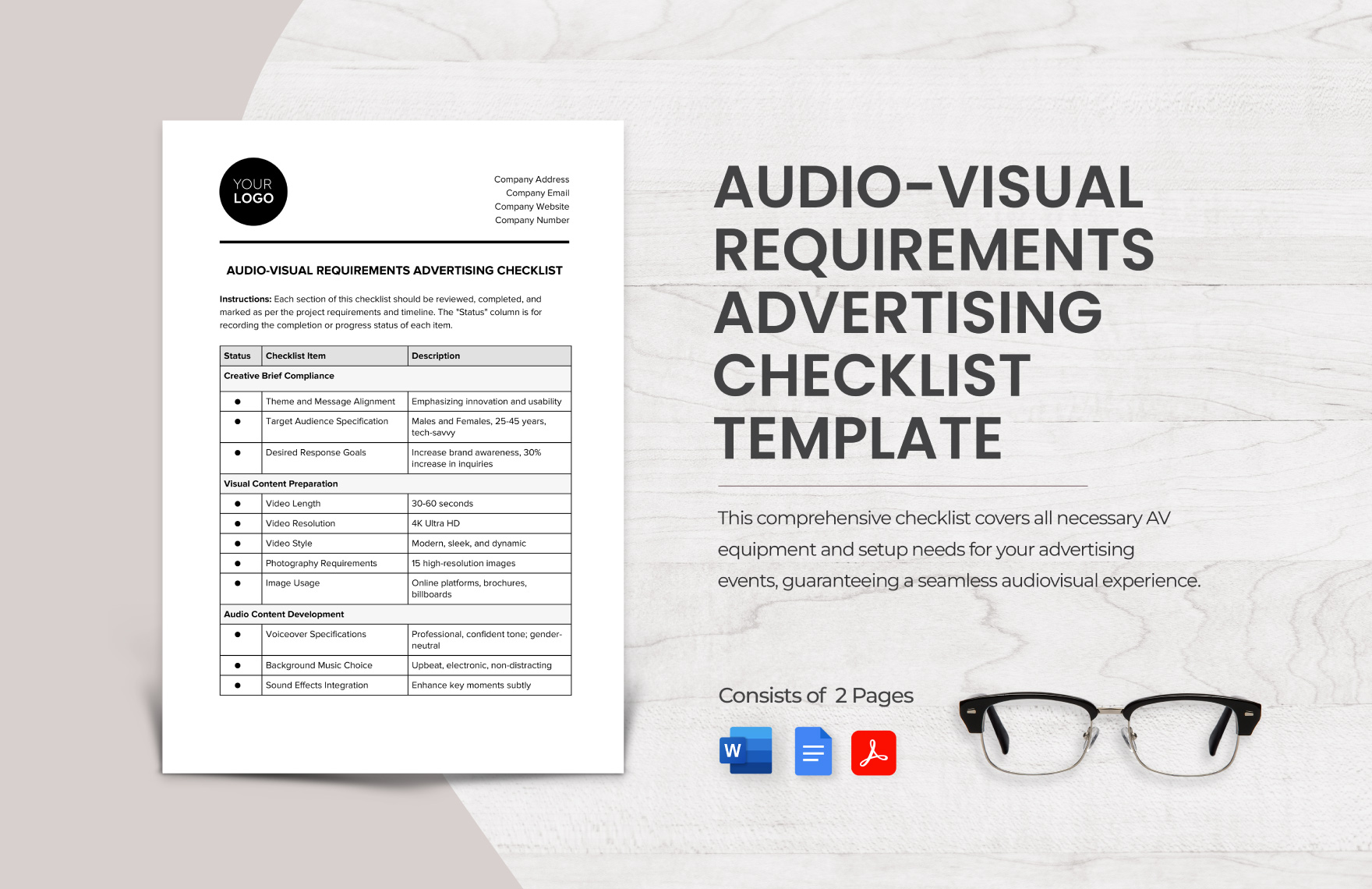Embarking on any audio visual project, whether it’s outfitting a new conference room, upgrading a classroom, or designing an entire facility, always starts with a critical first step: the site survey. Think of it as the foundational blueprint for your entire AV installation. It’s during this initial visit that you gather all the vital information about the physical space, its existing infrastructure, and the specific needs of the client. Without a thorough understanding of these elements, even the most brilliant AV design can fall flat, leading to costly reworks and frustrating delays.

This is precisely where a well-structured audio visual site survey template becomes an invaluable asset. It transforms what could be a chaotic information-gathering process into an organized, efficient, and comprehensive activity. Instead of relying on memory or hastily scribbled notes, a template ensures you capture every piece of relevant data, from power outlet locations to ambient lighting conditions and network availability. It’s your reliable checklist to guarantee no critical detail is overlooked, paving the way for a smooth project execution and ultimately, a satisfied client.
Why an Audio Visual Site Survey Template is Your Best Friend
Imagine showing up to a new project site with just a notepad and a pen. You might get some of the critical information down, but chances are, you’ll forget something important. Perhaps you’ll miss noting the ceiling height, the type of wall construction, or the exact location of the nearest network drop. This is where a dedicated template truly shines. It provides a consistent framework for every survey, ensuring that you and your team collect the same high-quality, comprehensive data every single time. This consistency not only saves time but drastically reduces the potential for costly omissions or assumptions later in the project lifecycle.
A standardized audio visual site survey template streamlines the entire discovery process. It acts as a guided tour through the client’s space, prompting you to consider every angle and potential challenge. This structured approach helps in identifying potential roadblocks early on, such as insufficient power, poor acoustics, or tricky cable pathways, allowing you to address them proactively in your design and proposal. It also facilitates better communication within your team, as everyone can refer to a clear, uniformly documented record of the site conditions.
Furthermore, a comprehensive template isn’t just a checklist; it’s a tool for collaboration. It ensures that all stakeholders, from the sales team and designers to the installation crew, are on the same page regarding the physical realities of the site. This shared understanding minimizes misinterpretations and helps manage client expectations more effectively. It’s about building a foundation of accurate information that supports every subsequent stage of the AV project.
Key Elements to Include
To be truly effective, an audio visual site survey template should cover a broad spectrum of information. Here are some essential categories and specific details you should consider incorporating:
- General Information: Client name, project name, date of survey, surveyor’s name, contact person on site.
- Room Details: Room name/ID, dimensions (length, width, height), seating capacity, existing furniture layout.
- Structural & Environmental: Wall construction (drywall, concrete, glass), ceiling type (drop, open, solid), floor type, window locations and light exposure, HVAC noise levels, ambient light levels.
- Power & Electrical: Number and location of outlets, dedicated circuits, power availability (voltage, amperage), UPS needs.
- Networking & Connectivity: Wi-Fi availability and strength, Ethernet port locations, network speed requirements, security protocols.
- Audio Considerations: Background noise levels, reverb/echo presence, speaker placement options, microphone requirements, acoustic treatments.
- Video Considerations: Display locations, line of sight, projection distances, screen size requirements, ambient light for display viewing.
- Mounting & Rigging: Structural support points, weight limits, cable routing paths, access for installation and maintenance.
- Existing Equipment: Inventory of current AV gear, its condition, and whether it will be integrated or removed.
- Special Notes & Photos: Any unique challenges, client requests, potential future needs, and comprehensive photographic documentation of the space.
By diligently filling out these sections, you create a robust data set that becomes the bedrock for your design, proposal, and installation plans. This detailed record significantly reduces the chances of unexpected hurdles, ultimately leading to a more efficient and successful project.
Beyond the Basics: Maximizing Your Site Survey’s Potential
While an audio visual site survey template is a fantastic tool for data collection, its true power lies in how you utilize it beyond just checking boxes. A truly effective site survey is not just about what information you gather, but also how you interpret and leverage it. It’s about combining factual data with keen observation, critical thinking, and a deep understanding of the client’s vision and daily operations. Don’t just list what’s there; consider what isn’t there, or what could be improved.
One of the most valuable aspects of the site survey is the direct interaction with the client or end-users. This isn’t just an opportunity to measure rooms; it’s a chance to truly understand their pain points, their workflows, and their aspirations for the new AV system. Ask open-ended questions: “What challenges do you face with your current setup?” “How do you envision this space being used in five years?” “Are there any specific user experiences you want to achieve?” The answers to these questions will often inform your design far more than a simple measurement ever could.
Furthermore, always think about scalability and future-proofing during your survey. While the client might have immediate needs, consider how technology might evolve or how their organization might grow. Are there provisions for adding more displays later? Is the network infrastructure robust enough to handle increased bandwidth demands? Thinking ahead during the initial survey can save your client significant costs and disruptions down the line, positioning you as a forward-thinking partner.
Finally, comprehensive documentation, especially through photography, is non-negotiable. Photos of current conditions, specific architectural features, power outlets, network jacks, and potential cable routes are incredibly useful for your design team and installers. They provide context and clarity that written notes alone cannot. Annotate these photos with relevant details directly on your template or in a linked digital file. This meticulous record-keeping not only aids in the current project but also serves as a valuable reference for future maintenance or upgrades.
By approaching each site survey with this holistic mindset, you transform a simple checklist activity into a strategic planning session. It ensures that every aspect of the physical environment is considered, every client need is understood, and every potential challenge is anticipated. This detailed groundwork significantly increases the likelihood of delivering an AV system that not only meets but exceeds expectations, establishing a strong foundation for the project’s success and building lasting client relationships.
Ultimately, a successful audio visual project hinges on meticulous planning and accurate information. The initial site survey, empowered by a robust template, sets the stage for everything that follows, from the conceptual design and equipment procurement to the final installation and commissioning. It’s the process that eliminates guesswork and replaces it with data-driven decisions, ensuring that the proposed solution perfectly aligns with the physical space and the client’s operational needs.
Investing the time and effort into a thorough, template-guided site survey is an investment in the entire project’s success. It fosters efficiency, minimizes errors, and builds confidence among all stakeholders, leading to seamless installations, happy end-users, and a reputation for excellence in delivering cutting-edge audio visual solutions.


